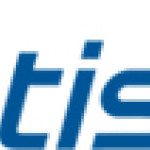- 産業: Telecommunications
- Number of terms: 29235
- Number of blossaries: 0
- Company Profile:
ATIS is the leading technical planning and standards development organization committed to the rapid development of global, market-driven standards for the information, entertainment and communications industry.
An intranet that has been extended to include access to or from selected external organizations such as customers or suppliers, but not the general public. Note: Connections may be via leased lines, dial-up connections, or network interconnections. The overall network may be, but is not necessarily, a virtual private network.
Industry:Telecommunications
An inventory that specifies the source, location, ownership, usage, and destination of all of the data elements that are stored in a database.
Industry:Telecommunications
An ISDN number, supplied by the calling user's or the redirecting user's network, which is associated with the calling user or the redirecting user. It is possible that the NPN may have the same value as the user provided number (UPN) especially in cases where delivery of two calling party numbers is supported. The NPN may also be accompanied by a subaddress.
Industry:Telecommunications
An ISDN number, supplied completely or partially by the calling user or the redirecting user, that is associated with the calling user or the redirecting user. The UPN may also be accompanied by a subaddress.
Industry:Telecommunications
An item designed to secure or authenticate telecommunications. Note: COMSEC material includes, but is not limited to, key, equipment, devices, documents, firmware or software that embodies or describes cryptographic logic and other items that perform COMSEC functions.
Industry:Telecommunications
An item produced or used during development of a system that is required to be made available to the evaluators for evaluation purposes. Note: Includes support and access to computers.
Industry:Telecommunications
An ITU-T Integrated Services Digital Network (ISDN) multipurpose user interface standard that denotes the capability of simultaneous voice and data services provided over two clear 64-kb/s channels and one clear 16-kb/s channel (2B+D) access arrangement to each user location.
Industry:Telecommunications
An LED that has a physical structure superficially resembling that of an injection laser diode, operated below the lasing threshold and emitting incoherent light. Note: Edge-emitting LEDs have a relatively small beam divergence, and thus are capable of launching more optical power into a given fiber than are the conventional surface-emitting LEDs.
Industry:Telecommunications
An MPEG video frame type that provides bidirectional interframe compression. Note: A b frame derives its content from the closest 1 or P frame, one in the past and one in the future. Generating b frames requires greater computing power than does generating 1 or P frames. The use of b frames enables compression ratios of 200:1. Robust MPEG encoders employ a combination of b, 1, and P frame encoding.
Industry:Telecommunications
An occasional adjustment of one second, added to, or subtracted from, Coordinated Universal Time (UTC) to bring it into approximate synchronism with UT1, which is the time scale based on the rotation of the Earth. Note 1: Adjustments, when required, are made with respect to the last second of the last minute of the day (Universal Time) on one of two annual days of opportunity (June 30 or December 31. ) Note 2: The last minute of the day on which an adjustment is made will therefore have 61 or 59 seconds. The former is the usual case, and the latter, a theoretical possibility if ever needed. Note 3: An adjustment is required on any day of opportunity when it is anticipated that if unadjusted, UTC will deviate from UT1 by more than 0. 9 second before the next day of opportunity.
Industry:Telecommunications
